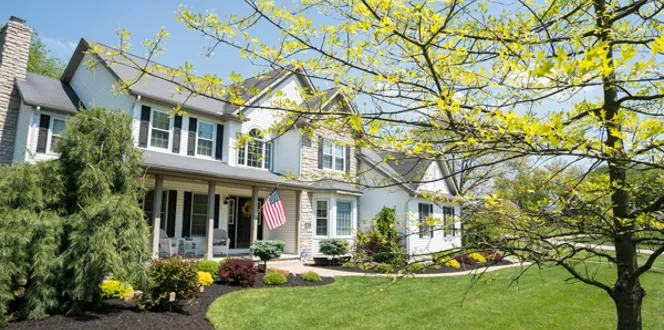The towering trees and prized plants in our yards? There’s more to them than meets the eye.
Trees and plants don’t just provide beauty on your property; they deliver a substantial return on investment in exchange for relatively low-cost maintenance.
If you’re wondering what types of trees give you the best bang for your buck, or what kinds of plants are more of a burden than a benefit, keep on reading!
The Effect Of Landscaping On Property Value
Trees don't ask for much—soil, water, sunlight, and some TLC. Yet they provide a wealth of benefits: They improve the air you breathe, cut your energy bills with their shade, provide homes for wildlife and help you fetch a higher price and quicker sale when your home is on the market.
How Much Value Does Landscaping Add?
Lots of studies about landscape investments tell us that landscaping can add approximately 10 to 28 percent more value to a property—especially landscaping that includes mature trees.
And further, according to the Arbor Day Foundation, 83 percent of realtors believe mature trees have a strong or moderate impact on the salability of homes listed for less than $150,000. On homes more than $250,000, this perception increases to 98 percent.
Those facts alone are solid reasons to devote time to the yard. But they also might raise a couple of questions. For example, are some trees more valuable than others? Does tree species matter? Oh, and what about the lawn? Let’s take a look at all these factors below.
The Importance Of Tree And Shrub Health On Property Value
It probably goes without saying that healthy trees and shrubs are much more valuable than unhealthy ones.
Declining trees can quickly turn a lovely landscape into a liability. Think about it this way: if a tree is suffering from leaf loss, it can’t provide the same shady spots or energy-saving cooling effects of a full, healthy tree. Or, a visibly declining tree could detract from your yard’s curb appeal. After all, hanging branches or browning leaves don’t quite say, “welcome home.”
And those are just a few examples. The point is, it’s important to protect your green investment with Plant Health Care practices such as proper pruning, mulching, watering, and fertilization.
As far as species, there aren’t particular plants or trees that add more value than others. Health is the number one factor, and when you add plants or trees that are naturally suited for your region, they have a much better chance at remaining healthy and vigorous.
Keeping Your Lawn Well-Manicured For The Housing Market
If you’re putting your home up for sale, a thick, green and weed-free lawn goes a long way.
But, if your lawn isn’t quite there yet, don’t sweat it. Prioritize a few lawn care essentials, like overseeding at the right time, mowing to the proper height, and fertilizing the lawn.






